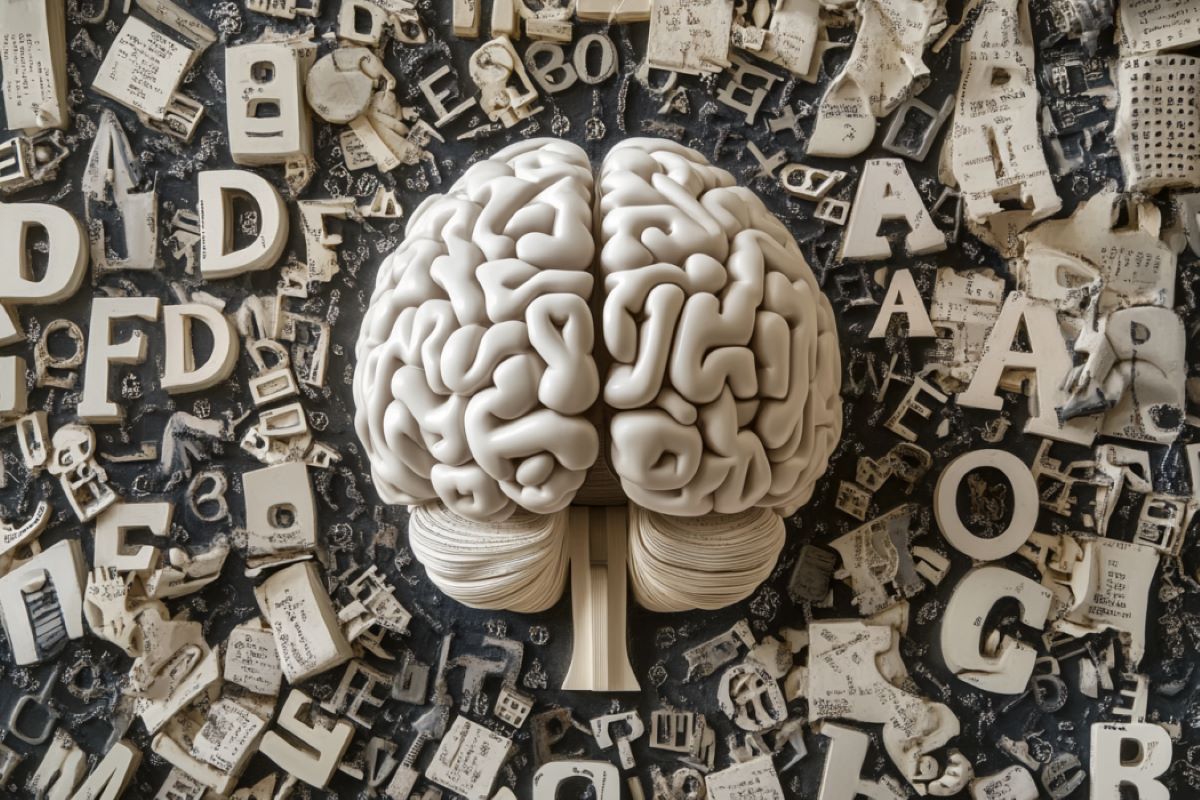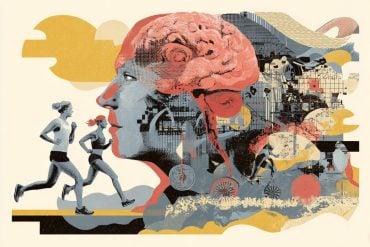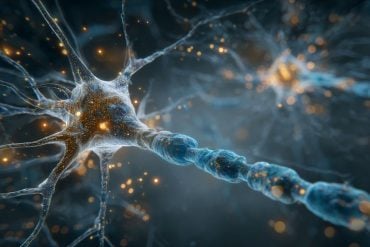Summary: A recent study highlights that many autistic children show an intense interest in letters and numbers, which may play a distinct role in their language development. By analyzing clinical records and interviewing parents, researchers found that 37% of autistic children had a strong interest in letters, in contrast to just 3% of non-autistic peers.
This interest often emerges around 30 months, aligning with typical development timelines but diverging in how it’s applied. Autistic children tend to explore letters and numbers independently, possibly contributing to unique language-learning paths.
The findings suggest that encouraging this interest could support language acquisition for some autistic children, challenging the notion that such interests impede social development. Researchers hope these insights inspire educational adaptations that better accommodate neurodiverse learning pathways.
Key Facts
- 37% of autistic children showed an intense interest in letters, versus 3% of non-autistic children.
- Autistic children often pursue letters and numbers independently, without social cues.
- This early interest may support language skills, even when verbal communication is delayed.
Source: University of Montreal
During diagnostic assessments, many autistic children spontaneously head to the magnetic board with letters and numbers. How common is this interest in letters and numbers among autistic children? What precisely is the nature of this interest? And what does it mean for their language development?
Canadian autism researcher Alexia Ostrolenk – who earned her PhD in psychiatric sciences at Université de Montréal under the supervision of professor Laurent Mottron, a psychiatrist at the Rivière-des-Prairies Mental Health Hospital of the CIUSSS du Nord-de-l’Île-de-Montréal – set out to answer these questions.

In a large-scale study, Ostrolenk and her research team of doctoral students at UdeM and Université de Sherbrooke examined the medical records of 701 young children assessed for autism spectrum disorder at the UdeM-affiliated Rivière-des-Prairies Mental Health Hospital clinic between 2018 and 2021.
Of those 701, 391 had been diagnosed with autism and 310 were not autistic. Their average age was four-and-a-half, and all were under the age of seven.
“We combed through reports written by psychiatrists and psychologists to see if they mentioned anything related to the child’s interest in letters or numbers,” said Ostrolenk, who is now a postdoctoral researcher with a CIHR Health System Impact Fellowship, based at Autism Alliance of Canada and Unity Health Toronto.
While at UdeM, she was assisted in her research by PhD candidates David Gagnon (psychiatry, UdeM), Mélanie Boisvert (psychiatry and addiction, UdeM), Océane Lemire (psychology, UdeM), Sophie-Catherine Dick (psychology, UdeS) and Marie-Pier Côté (psychology, UdeM).
In their study, the students conducted 45-minute telephone interviews with a sub-sample of the 701 under review : 138 parents of autistic children, 99 parents of non-autistic children with atypical development, and 76 parents of children with typical development.
The interviews explored the children’s interest in letters and numbers in greater depth with questions such as Does your child sing the “ABC” song? Does your child like writing the letters of the alphabet? and Does your child ask you to read to them?
The questions were designed to distinguish between social behaviours, such as reading with an adult, and non-social behaviours, such as writing the letters of the alphabet on their own.
Significant differences observed
The study – which was funded by the Fonds de Recherche du Québec – Health sector, Canada’s Transforming Autism Care Consortium, and the Marcel and Rolande Gosselin Research Chair in Cognitive Neuroscience and Autism – found significant differences in interest in letters and numbers between autistic and non-autistic children.
Based on the clinical reports, 20 per cent of the autistic children displayed an intense or exclusive interest in letters, compared with only three per cent of the non-autistic children.
The interviews with parents found an even more pronounced difference: 37 per cent of the autistic children showed an intense or exclusive interest in letters. That’s “a lot, especially considering that most of them have minimal verbal skills,” commented Gagnon.”
The results were similar for interest in numbers: 17 per cent of the autistic children showed an intense or exclusive interest in numbers, compared with only two per cent of the non-autistic children. In other words, an autistic child was 3.49 times more likely than a non-autistic child of the same age to show a heightened interest in numbers.
Ostrolenk’s study also found that autistic children’s interest in letters and numbers appears at the same age as in children with typical development, at an average of 30 months. This is earlier than in non-autistic children with atypical development, where it appears at about 36 months.
Interest often undetected
It’s clear that parents don’t always spot their autistic child’s interest in numbers and letters, mostly because autistic children tend to prefer solitary activities, so they pursue their interests more independently.
“Social behaviour is easier for parents to see because it involves them, as when their child asks to be read to,” explained Ostrolenk.
“But non-social behaviour can take place when the child is alone and can be missed by the parents, who aren’t part of it.”
Ostrolenk noted that there can be a gap between a child’s behaviour and their parents’ perceptions: “I’ve had parents tell me their child doesn’t speak a word, only to find, on further questioning, that their child is actually saying numbers or reciting the alphabet.”
These findings suggest that autistic children can develop early proficiency with letters even when there appears to be a significant delay in verbal language skills, the researchers say.
“A child who doesn’t communicate—in other words, doesn’t use language to relate to others—will nevertheless develop an interest in letters. They’re just not going to use it in the relational dimension,” explained Gagnon.
This has led researchers to speculate that some autistic children must be acquiring knowledge about language differently than other children.
“There are anecdotal reports of autistic children who weren’t speaking at all and then their parents heard them speak full, complex sentences in an emergency situation,” said Ostrolenk.
“For example, even though he had never spoken before, one child was able to explain there was a fire in the kitchen and they all had to leave immediately.”
Rethinking how they’re taught
If language acquisition follows a different developmental pathway in some autistic children, what does this mean for society’s current educational paradigm?
“In the past, an intense interest in letters was often seen as an obstacle to the child’s normal development,” said Ostrolenk.
“It was thought that we should limit this interest and focus on other aspects of development. The idea was, these children can’t speak, we have to stop reading to them.
“But if we can show that reading can be an essential step in the development of oral language in these children, then we should encourage it and help the child follow their own path, even though it differs from the typical trajectory.”
Gagnon echoes this sentiment. “To innovate in this field, we can’t just look at what the children aren’t doing or are doing differently. We also have to understand where their interests lie and how they manage to develop with what is probably a different way of perceiving the world.”
About this ASD and learning research news
Author: Julie Cordeau-Gazaille
Source: University of Montreal
Contact: Julie Cordeau-Gazaille – University of Montreal
Image: The image is credited to Neuroscience News
Original Research: Open access.
“Enhanced interest in letters and numbers in autistic children” by Alexia Ostrolenk et al. Molecular Autism
Abstract
Enhanced interest in letters and numbers in autistic children
Background
An intense and precocious interest in written material, together with a discrepancy between decoding and reading comprehension skills are defining criteria for hyperlexia, which is found in up to 20% of autistic individuals. It may represent the extreme end of a broader interest in written material in autism.
This study examines the magnitude and nature of the interest in written material in a large population of autistic and non-autistic children.
Methods
All 701 children (391 autistic, 310 non-autistic) under the age of 7 referred to an autism assessment clinic over a span of 4 years were included. Ordinal logistic regressions assessed the association between diagnosis and the level of interest in letters and numbers.
A nested sample of parents of 138 autistic, 99 non-autistic clinical, and 76 typically developing (TD) children completed a detailed questionnaire. Cox proportional hazards models analyzed the age of emergence of these interests. Linear regressions evaluated the association between diagnosis and interest level.
The frequency of each behaviour showing interest and competence with letters and numbers were compared.
Results
In the two studies, 22 to 37% of autistic children had an intense or exclusive interest in letters. The odds of having a greater interest in letters was 2.78 times higher for autistic children than for non-autistic clinical children of the same age, and 3.49 times higher for the interest in numbers, even if 76% of autistic children were minimally or non-verbal.
The age of emergence of these interests did not differ between autistic and TD children and did not depend on their level of oral language. Non-autistic children showed more interest in letters within a social context.
Limitations
The study holds limitations inherent to the use of a phone questionnaire with caregivers and missing sociodemographic information.
Conclusions
The emergence of the interest of autistic children toward written language is contemporaneous to the moment in their development where they display a strong deficit in oral language.
Together with recent demonstrations of non-social development of oral language in some autistic children, precocious and intense interest in written material suggests that language acquisition in autism may follow an alternative developmental pathway.







